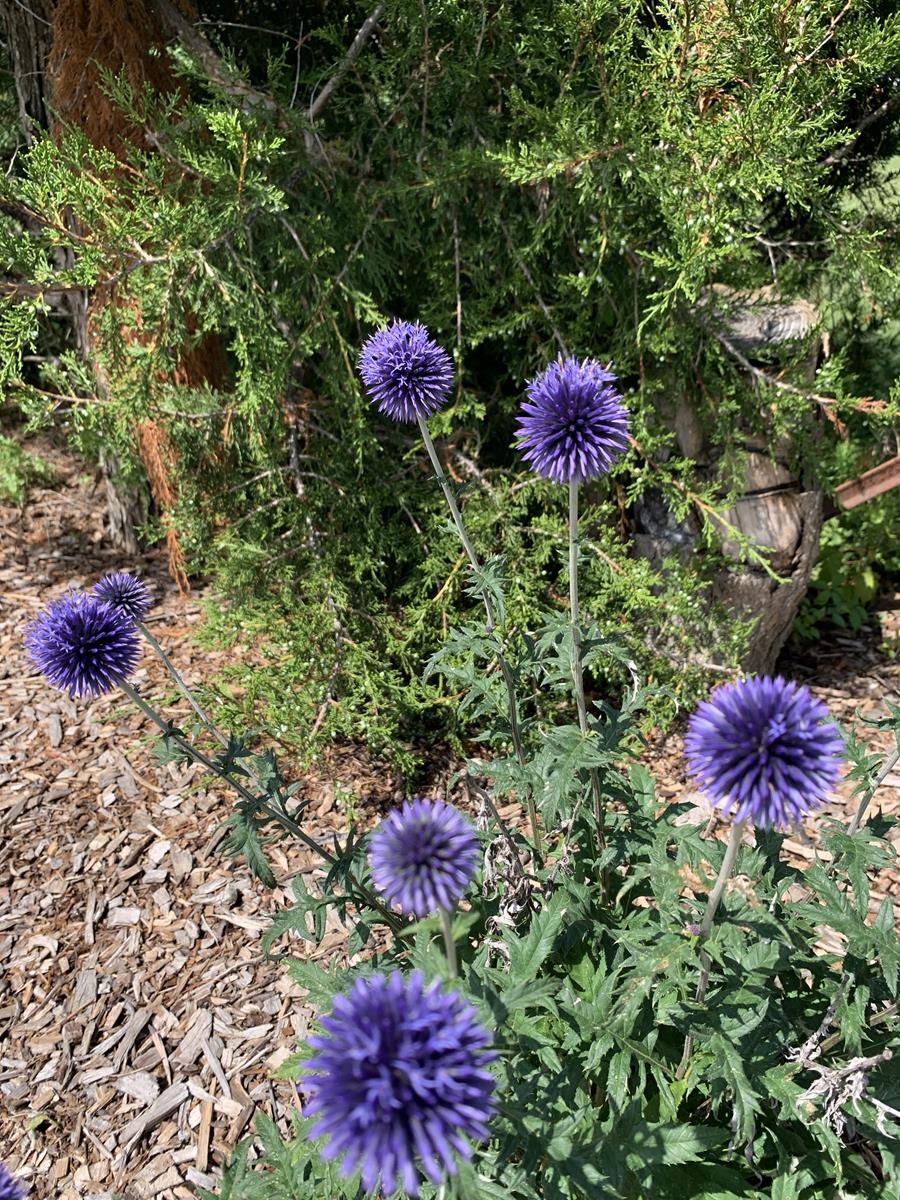Thistle
Garden Clippings for August 12, 2023
Thistles do not have the best of reputations. They are an invasive perennial that farmers hate because a thistle infested field can reduce crop yield by up to 50%. Thistles have nasty leaves full of spines along all margins, making them impossible to pull out unless you are wearing protective gloves.
Thistle roots are even nastier than their tops. After pulling the plant out of the ground, the few root remnants left behind will invariably sprout and re-offend. Thistle seeds are attached to white fluff, which blows around looking for a place to settle and cause more trouble.
But the thistles in our backyard are magnificent.
Globe thistle (Echinops), remotely related to its nasty cousin, has perfect globes sitting on straight stems. ‘Vetch’s Blue’ is noteworthy for its striking deep blue colour, unrivaled by any other blue flower.
Unlike the weed, Globe Thistle is not an aggressive grower. Ours is planted in the back forty where it gets lots of sunshine and no water other than what comes from above. Leaves are small, silvery green, unimpressive, with tiny thorns along their edges.
In our backyard, Globe Thistles are among the many summer flowering perennials putting on an incredible show. Summer flowering perennials are generally taller, showier and longer lasting than their spring flowering counterparts.
Shasta Daisies (Leucanthemum) are perhaps the most commonly grown summer perennial. Pure white blooms with white centres are a classic, growing 2 to 3 feet high. Long lasting blooms attract butterflies and make great cut flowers. Shasty Daisies love sunshine, heat and dry soil.
Coneflowers (Echinacia Purpurea) have flowers like Shasta Daisy but purple, with downward leaning petals. The original Coneflower is a Canadian native, while new cultivars are found in various colours and heights. Coneflowers are a logical addition to mixed perennial gardens, providing long lasting colour, especially when planted adjacent to yellows and whites.
For bright yellow colour, Black-Eyed Susan (Rudbeckia) cannot be beat. Another perennial with native origins, Black-Eyed Susan will attract bees and butterflies, and will draw songbirds looking for seeds later in the fall. My favorite variety is ‘Goldsturm’, a compact grower covered in blooms through most of the summer.
Summer Phlox (Phlox paniculate) are a staple in a mixed perennial border, with showy round heads of flower in a multitude of colours. Blooms are fragrant and often visited by hummingbirds, bees, butterflies and birds. Summer Phlox are notorious for getting powdery mildew but will continue to grow without issue. To reduce the fungus, plant Phlox in full sun, and thin out clumps to encourage air movement.
Other dependable summer flowering perennials providing long lasting colour include Pincushion Flower (Scabiosa), Oriental Lily (Lilium orientalis), Blanketflower (Gailardia) Bee Balm (Monarda didyma) and Balloon Flower (Platycodon grandiflorus).


